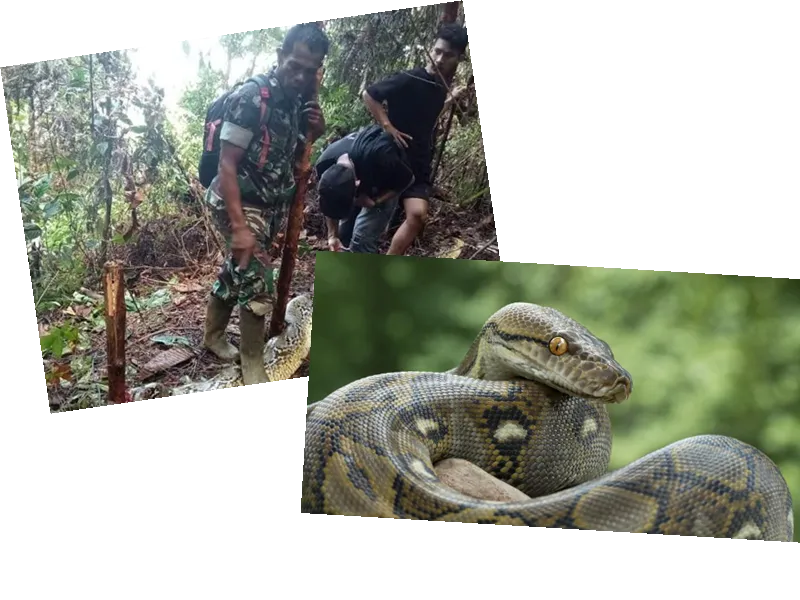A tragic incident occurred in the Indonesian province of South Sulawesi, where a 36-year-old woman was found dead inside a python. The woman had left her home to buy medicine for her sick child when she went missing. Her husband and local villagers discovered her shoes and pants about 500 meters from their house in the village of Siteba, leading them to a python with a noticeably large belly. Upon cutting open the snake, they found the lifeless body of the woman.
This incident is the second of its kind in less than a month in Indonesia. Earlier in June, a 45-year-old woman named Farida was also found dead inside a five-meter-long reticulated python in the Kalempang village of South Sulawesi. Farida had gone out to sell products at a local market and did not return home, prompting a search by her husband and villagers, which ended in the grim discovery.
Reticulated pythons (Malayophython reticulatus) are known to be the longest snakes in the world, reaching up to 8 meters and 250 kilograms. These snakes typically suffocate their victims before swallowing them whole. While their usual diet consists of rodents, fish, and other reptiles, they are capable of attacking and consuming larger animals, including humans.
Such tragic encounters with pythons are rare but not unheard of in Indonesia. In a similar incident in October 2022, a 54-year-old woman named Jahrah was devoured by a nearly 7-meter-long python while working in rubber harvesting in Jambi province. Her family and villagers found her body inside the snake two days after she went missing.
In 2017, a 27-year-old man was also found dead inside a python in Sulawesi. These incidents highlight the dangers posed by these enormous reptiles, particularly in rural areas where human-snake encounters are more likely.
- The reticulated python is a formidable predator, known for its ability to constrict and swallow prey much larger than itself. In the wild, these snakes usually feed on animals like monkeys, deer, wild boars, and even leopards.
- Local authorities have urged residents to exercise caution, especially in areas known to be inhabited by these large snakes. The increasing encroachment of human settlements into natural habitats has led to more frequent encounters between humans and wildlife, sometimes with deadly consequences.
- Efforts are being made to educate the local population about the risks posed by these snakes and the importance of reporting sightings to authorities. Conservationists also emphasize the need for preserving natural habitats to reduce human-wildlife conflicts.






